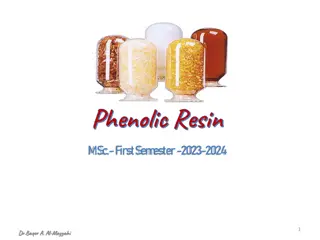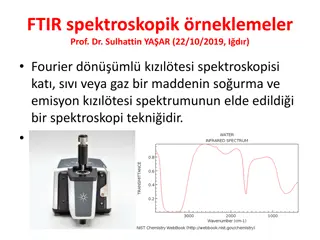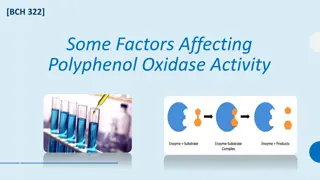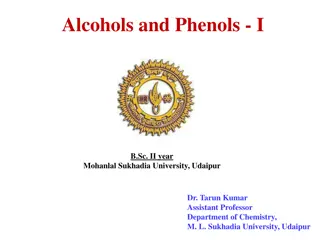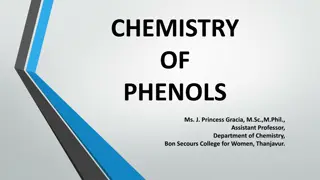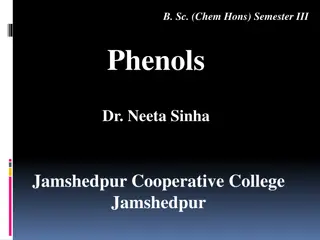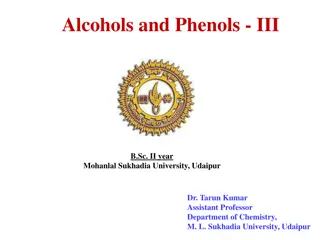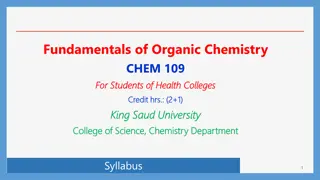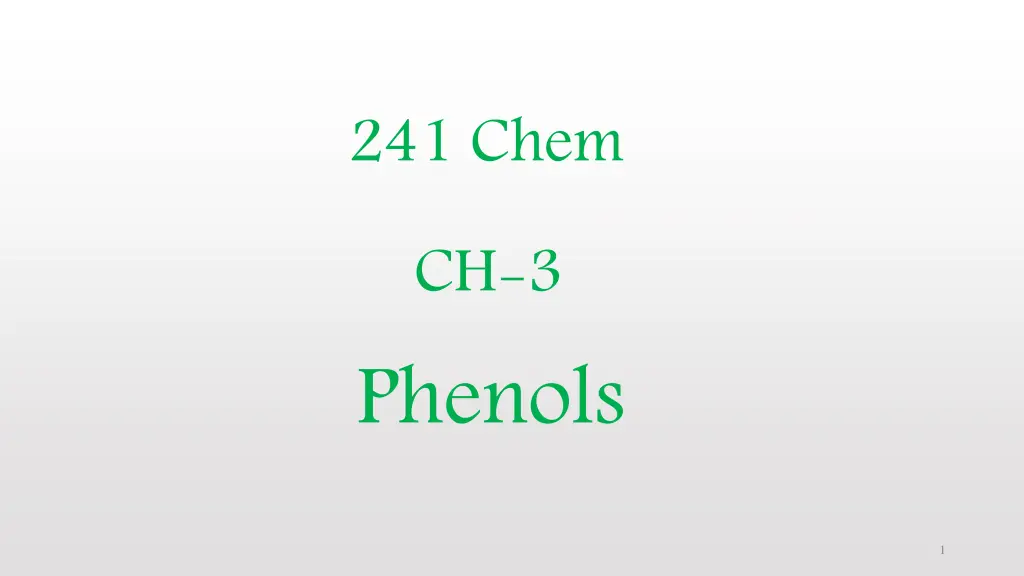
Understanding Phenols in Chemistry
Explore the structure, nomenclature, physical properties, and acidity of phenols in chemistry. Learn about the differences between alcohols and phenols, methods of preparation, and chemical reactions associated with phenols.
Download Presentation

Please find below an Image/Link to download the presentation.
The content on the website is provided AS IS for your information and personal use only. It may not be sold, licensed, or shared on other websites without obtaining consent from the author. If you encounter any issues during the download, it is possible that the publisher has removed the file from their server.
You are allowed to download the files provided on this website for personal or commercial use, subject to the condition that they are used lawfully. All files are the property of their respective owners.
The content on the website is provided AS IS for your information and personal use only. It may not be sold, licensed, or shared on other websites without obtaining consent from the author.
E N D
Presentation Transcript
241 Chem CH-3 Phenols 1
Learning Objectives By the end of this chapter the student will Know: The structure of phenols. The difference in structure between alcohols and phenols. The nomenclature of phenols. The Physical properties of phenols. The acidic properties of phenols vis acidic of alcohols. The different methods of preparation of phenols. The chemical reactions of phenols. 2
Structure of Phenols Phenols are compounds of the general formula ArOH, where Ar is an groups. Phenols differ from alcohols in having the OH group attached directly to an benzene ring. Phenols is the specific name for hydroxybenzene, and it is the general name for the family of compounds derived from hydroxybenzene. 3
Nomenclature of phenols The simplest member of this class of compounds is named phenol. Phenolsare usually named as derivatives of the parent compounds. Numbering of the ring begins at the hydroxyl-substituted carbon and proceeds in the direction that gives the lower number to the next substituted carbon. Substituents are cited in alphabetical order. 4
Nomenclature of phenols Dihydroxypenols Polyhydroxypenols 1,3,5-Benzenetriol (Phloroglucinol) 1,2,3-Benzenetriol Pyrogallol 1,2,4-Benzenetriol Hydroxy quinol The hydroxyl group is named as a substituent when it occurs in the same molecule with carboxylic acid, aldehyde, or ketone functionalities, which have priority in naming. 5
Physical properties of phenols Phenol is a colourless, crystalline The presence of hydroxyl groups in phenols means that phenols are like alcohols. For example, they are able to form strong intermolecular hydrogen bonds, and therefore have higher boiling points than hydrocarbons of the same molecular weight. Phenols are also modestly soluble in water because of their ability to form strong hydrogen bonds with water molecules. 6
Physical properties of phenols Acidity of phenols Like water, alcohols and phenols are weak acids. The hydroxyl group can act as a proton donor, and dissociation occurs in a manner similar to that for water Phenols are more acidic than alcohols, and weaker acids than carboxylic acids. Phenols are stronger acids than alcohols mainly because the corresponding phenoxide ions are stabilized by resonance. The negative charge of an alkoxide ion is concentrated on the oxygen atom, but the negative charge on a phenoxide ion can be delocalized to the ortho and para ring positions through resonance. 7
Substituents effects on the Acidity of Phenols Electron-withdrawing groups increase acidity by stabilizing the conjugate base. Electron-donating groups decrease acidity because they destabilize the conjugate base. OH OH OH OH OH O2N < NO2 O2N < < < NO2 NO2 CH3 NO2 4-Methylphenol 2,4,6-Trinitrophenol Picric acid Phenol 4-Nitrophenol 2,4-Dinitrophenol pH=7 pH=4 pH=2.5 pH>10 pH=10 8
Preparation of Phenols 1. Hydrolysis of Diazonium salts 2. Alkali fusion of Benzenesulfonic acid or Sodium benzene-sulfonates 3. .Hydrolysis of Chlorobenzene (The Dow process) 4. From Cumene Hydroperoxide 9
Preparation of Phenols 1. Hydrolysis of Diazonium salts Diazonium salts react with water in the presence of mineral acids to yield phenols. 2. Alkali fusion of Benzenesulfonic acid or Sodium benzene-sulfonates Addition-elimination of nucleophilic aromatic substitution 10
Preparation of Phenols 3. Hydrolysis of Chlorobenzene (The Dow process) 4. From Cumene Hydroperoxide ( Industrial Syntheses ) Cumene (isopropylbenzene( 11
Reactions of phenols 1. Salt formation via strong base or active metal 2. Ester formation 3. Reaction of aromatic nucleus of phenol: Nitration Friedel-Crafts acylation Sulphonation Halogenation 4. Kolbe Schmitt reaction: Synthesis of salicylic acid 5. Oxidation of Phenols 12
Reactions of phenols 1. Salt formation via strong base or active metal With active metals With bases 2. Formation of Esters From Phenols react with carboxylic acid anhydrides and acid chloride O-Acylation 13
Reactions of phenols 3. Reaction of aromatic nucleus of phenol The hydroxyl group is a powerful activating group and an ortho - para director in Electrophilic Aromatic Substitutions a. Nitration c. Halogenation b. Sulfonation d. Acylation Friedel-Crafts Acylation ( C-Acylation ) 2-Hydroxysulfonic acid 4-Hydroxysulfonic acid 14
Reactions of phenols 4. Kolbe Schmitt reaction: Synthesis of salicylic acid 5. Oxidation of Phenols: Quinones Oxidation of derivatives of 1,2-benzenediol (pyrocatechol) 1,4-benzenediol (hydroquinone) by oxidizing agents (Silver oxide or Chromic acid ) 15


